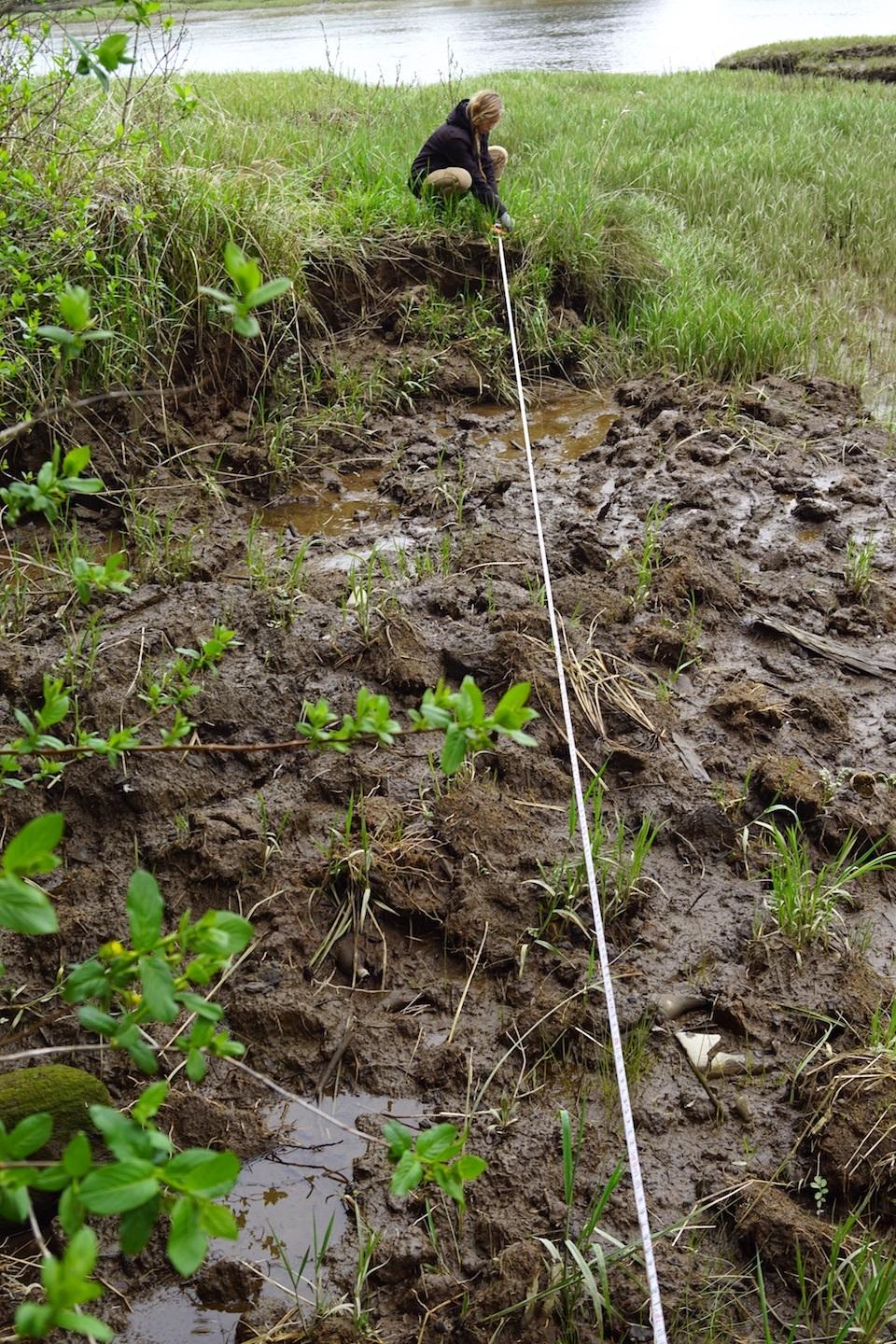
Lewis and Clark National Historical Park conservation intern Kelli Daffron measures the length of the disturbed archaeological site at 34 feet/NPS
Artifact poachers, likely armed with a metal detector, dug up artifacts in an area of Lewis and Clark National Historical Park in Oregon that is a listed archaeological site.
Park officials said the area near the Netul River Trail was heavily damaged, with the most severe damage along the bank of a tidal river where approximately 15 cubic yards of soil was disturbed - the size of one-and-a-half dump truck loads.
"Archaeologists make a great effort to record the context from which artifacts are recovered," said Rachel Stokeld, cultural resource specialist at the park, "to better understand their use and disposition and the wider historical picture. All this important information is now lost because of this illegal excavation."
The impacted area is also home to a salt marsh containing rare Lyngbye's sedge and Pacific silverweed. This plant community is "so uncommon it is classified as imperiled in the state of Oregon," said Carla Cole, a park natural resource program manager.
Unauthorized digging at an archaeological site is prohibited, as is the possession of metal detectors in national parks unless disassembled and stored in a vehicle.
Park Service investigators are asking anyone who was hiking on the Netul River Trail around March 20 to call if they have information that could help identify those responsible for the damage and looting.
Information can be provided by calling or texting the Investigative Services Branch tipline at 888-653-0009, going on line to submit a tip, or emailing agents at [email protected].

 Support Essential Coverage of Essential Places
Support Essential Coverage of Essential Places







Comments
As a detectorist myself, it pains me to see people abuse the hobby doing stuff like this. Aside from being illegal, stuff they may find is invaluable from a historical perspective and robs the public a chance to share in it.